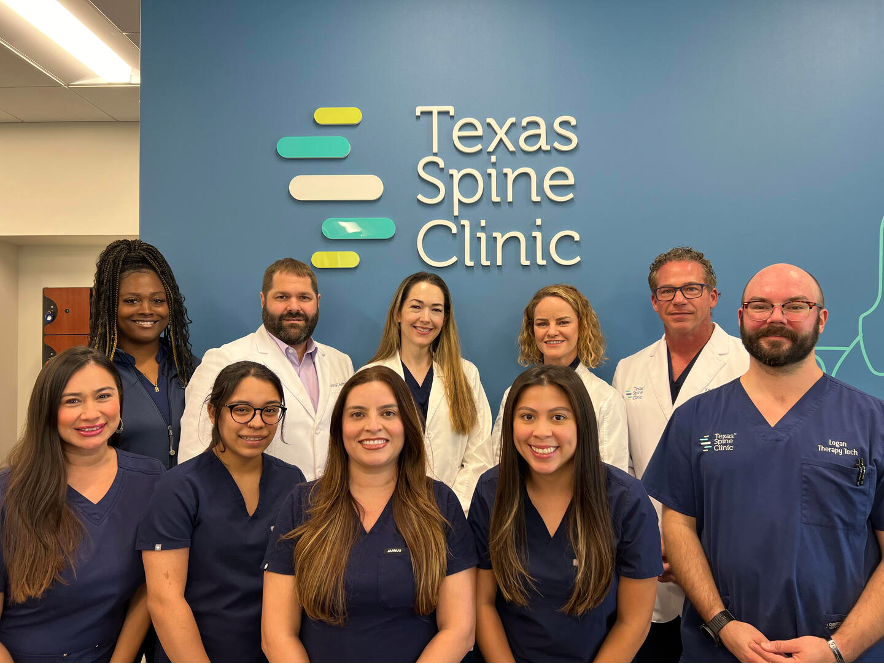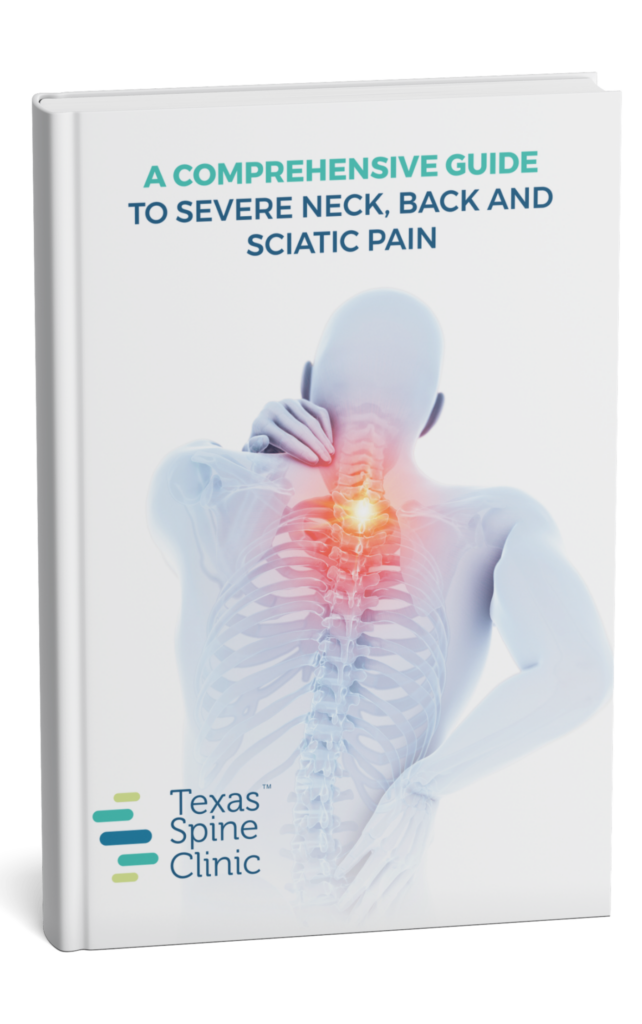Sports Injury Treatment Doctors in San Antonio, TX
At Texas Spine Clinic, we employ a range of non-surgical procedures designed to help you heal properly and get back on your feet quickly. Our staff of trained medical professionals combines cutting-edge techniques with time-tested physical therapy to help you find relief from your sports-related injuries.
Sports Injury Treatments We Offer
A broad term generally reserved for injuries occurring while engaged in athletic activities, sports injuries commonly involve the musculoskeletal system: your bones, joints, muscles, tendons, ligaments, and cartilage. It is important to treat your sports injury as soon as possible so you can avoid chronic problems that could impair function and loss of playtime in the long-term.
- Adjustments
- Ultrasound
- Dry Needling
- Heat/Ice
- Myofascial
- DRX Spinal Decompression
- E-Stim
- Exercises
- Laser
Request an Appointment
Please fill out the information below & someone from our team will contact you to confirm your visit.
"*" indicates required fields
Common Sports-Related Injuries
Injuries from sports can be quite painful. They typically occur because of accidents, improper training, overuse, lack of proper warm-up and stretching, or poor conditioning. The four most common athletic injuries we see include:
- Sprains and Strains
- Shin Splints
- Knee Injuries
- Tennis Elbow
Shin Splints
A condition characterized by pain in the front aspect of the lower leg and sometimes ankle, shin splints are very common in runners and basketball players jumping on hard surfaces. They also occur with people having flat feet.
People usually experience this sports injury because of overuse, overtraining, improper warm-ups, long runs, lack of arch support, or deconditioned athletes. It is important to rest the injury as continued use can lead to chronicity.
Tennis Elbow
The medical term for this condition is known as lateral epicondylitis. Tennis elbow is usually characterized by pain or tenderness to touch on the outside of the elbow caused by inflammation. Its effects are especially pronounced with certain movements such as twisting and gripping.
The cause of tennis elbow occurs from repetitive stress or injury to the common extensor tendon and muscle at the insertion on the lateral epicondyle of the elbow. Such activities may include racket sports requiring a backhand stroke, prolonged typing, or using a screwdriver.
Knee Injuries
Knee injuries from sports can be very complex involving one or more of the many ligaments, tendons, and cartilage that make up the knee. Minor injuries of the knee include:
- Runner’s Knee – pain at or under the knee cap at the front or sides
- Iliotibial Band Syndrome – pain at the lateral or outside parts of the knee and leg
- Tendonitis or Tendonosis – degeneration within the tendon usually at the site of the attachment to the bone
- Chondromalacia Patella – characterized by deep aching under the knee cap especially when kneeling or bending the knee for excessive periods
More serious conditions involve one or more of the internal structures of the knee:
- Cartilage – medial and lateral meniscus and articular cartilage
- MCL – medial collateral ligament
- LCL – lateral collateral ligament
- ACL – anterior cruciate ligament
- PCL – posterior cruciate ligament
Knee injuries in sports can be caused by a twisting motion of the knee while applying a downward step, hyperflexion, hyperextension, a sideways blow to the knee, landing wrong after jumping, or landing on an uneven surface. Symptoms may include localized pain at the knee associated with pain when walking, inflammation, joint swelling, and loss of function.
It is possible to just sprain or strain the knee, but sometimes a rupture or tear occurs, possibly requiring surgery. While over 5.5 million people visit orthopedic surgeons each year for knee pain, only a fraction of them will actually require surgery to fix their problem. Instead, physicians usually prescribe pain medication and send the patient to therapy. We believe that investing in sports injury treatment and management with our team of experts is usually a better choice than an orthopedic surgeon.
Sprain and Strains
A sprain involves the overstretching or complete tear of a ligament, the band-like structure that holds one bone tight to another bone. Sprains occur due to trauma such as a fall or impact to the body that causes a joint to be knocked from its normal position. A sprain can be classified as a Grade 1 (minimally stretched) to a Grade 3 (complete tear).
The most common sites of sprain type injuries include the ankle, knee, wrist, lower back, and neck (whiplash). Signs and symptoms of a sprain include:
- Pain or tenderness to touch
- Bruising
- Inflammation
- Swelling
- Joint instability
- Reduced range of motion
- Joint laxity
- Pain with pressure
A strain injury occurs from overstretching or stress to a muscle or tendon, the strong cord that attaches muscle to bone. It can result from twisting, bending, or over-contraction of a muscle. The symptoms are usually pain, tenderness, inflammation, spasm, loss of strength, or loss of function. Strains can be minor or severe, depending on the amount of damage or stress placed on the muscle or tendon.
Hours of Operation
| Monday | 7:30 AM – 5:30 PM |
| Tuesday | 7:30 AM – 5:30 PM |
| Wednesday | 7:30 AM – 5:30 PM |
| Thursday | 7:30 AM – 5:30 PM |
| Friday | Closed |
| Saturday | Closed |
| Sunday | Closed |
Call us to schedule an appointment!
Phone: 210-741-9166
Pain Keeping You Down?
Pain from a common athletic injury should not keep you from enjoying your everyday life! Contact Texas Spine Clinic to schedule an appointment at our sports injury clinic. Our skilled physicians employ non-invasive techniques that extend beyond standard sports medicine so you can enjoy comprehensive pain relief for a whole-body reduction in tension and stress.


